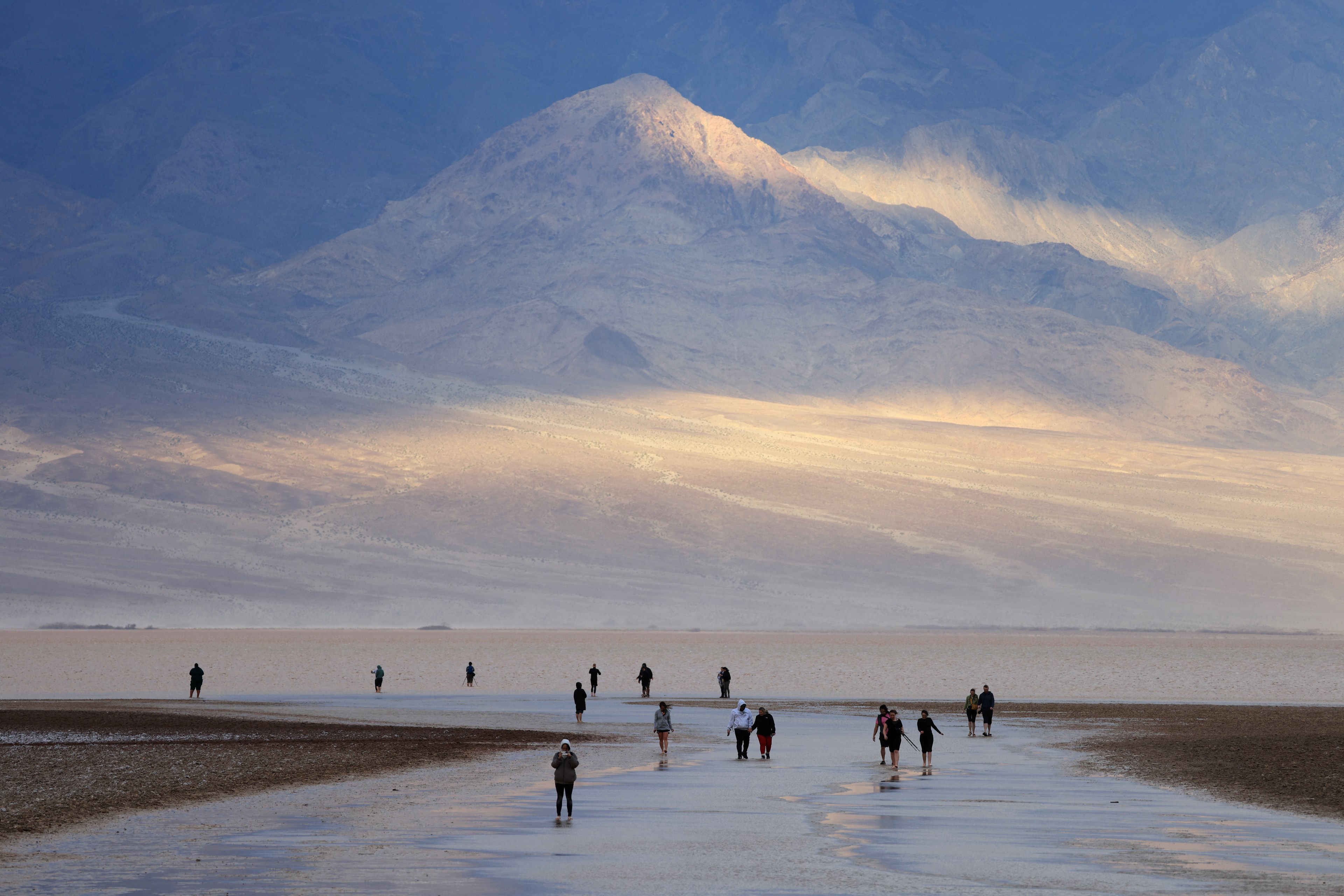That “temporary” lake that appeared in Death Valley National Park last fall? It’s not disappearing anytime soon.
Lake Manly was reported to be only a few inches deep in November, a few months after the remnants of Hurricane Hilary dumped more than 2 inches of rain into Badwater Basin, the lowest place in the United States at some 282 feet below sea level. Reappearing for the first time since 2005, the lake attracted paddleboarders to what’s typically a salt flat.
Now, the National Park Service says, the temporary lake may not be quite so temporary. Many locations across the lower half of the state have received in excess of 100% of their typical rainfall for the year—and it’s only February.
Death Valley, which averages a little more than 2 inches of rain per year, has gotten 4.9 inches in only the last six months. The year before last, the park saw its rainiest day in recorded history.
“You might think with no drain to the sea, that Death Valley would always have a lake,” park ranger Abby Wines said in a press release. “But this is an extremely rare event. Normally, the amount of water flowing in is much less than the evaporation rate.”
Measuring about 6 miles in length and 3 miles across, Lake Manly is about currently a foot deep—which means visitors to the largest national park in the Lower 48 can go kayaking for at least the next few weeks, maybe even into April.
The lake’s existence is somewhat counterintuitive. Although summer temperatures frequently exceed 120 degrees, water from Death Valley still collects in the low-lying basin. The strong desert sun bakes the earth into hardpan, meaning very little rain can soak into the ground. And Southern California’s stormy winter has meant continuous replenishment for the lake level.
Access to the park was challenging earlier in the winter, after flash floods from Hilary damaged the roads. Repairs mean Death Valley is now open for everyone to enjoy—although it’s a 10-hour drive from the Bay Area.
At this time, all hotels and most campgrounds in the park are open, according to the National Park Service. But visitors should be aware that venturing off-trail carries the potential for long-lasting consequences. In such a fragile landscape, even a single footprint in the mud could harden and last for years.
